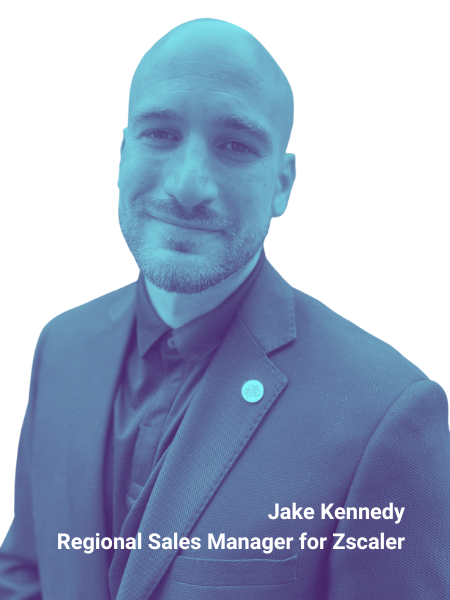Zscaler Starts with “Zero Trust” to Build Online Security
Tim Hayes
From its earliest days, some 30 years ago, cybersecurity worked like a medieval castle. All of the key players lived safely inside the thick outer walls, with a deep and wide moat around the perimeter to keep attackers far away.
But these ain’t medieval times anymore.
Users can be anywhere on the planet, requiring access to a common network. Instead of thick walls and a moat, today we have the cloud. But something as visible and permeable as a cloud also remains open to malicious intent. Who can be trusted in such a scenario?
According to Zscaler™, the answer is simple. Trust no one, and build your cybersecurity from that statement of fact.
Zscaler, creator of the Zero Trust Exchange™ platform, uses the largest security cloud on the planet to make doing business and navigating change a simpler, faster and more productive experience. The Zero Trust approach is just what it sounds like – verify and control access to everything, assume nothing can be trusted, and that everything is hostile by default. When a cloud environment can attract cybercriminals looking to steal, destroy or ransom sensitive data critical to business operations, such as personally identifiable information, intellectual property and financial information, it’s time to vacuum-seal and shrink-wrap your ones and zeros.
 “Zero Trust is where we shine,” said Jake Kennedy, Regional Sales Manager for Zscaler. “It all revolves around access management. When you visit the White House, you just can’t go in and walk around freely, you require an escort. Zero Trust serves as an escort at all stages of online communication to make sure you’re supposed to be where you are and not where you’re not supposed to be.
“Zero Trust is where we shine,” said Jake Kennedy, Regional Sales Manager for Zscaler. “It all revolves around access management. When you visit the White House, you just can’t go in and walk around freely, you require an escort. Zero Trust serves as an escort at all stages of online communication to make sure you’re supposed to be where you are and not where you’re not supposed to be.
“We’re driving toward having this same level of access management anywhere in the world, to make networking more agile,” he said. “Zscaler is still far ahead of the pack on this. The company was created in 2008, and it was forward thinking then.
For this approach to work, it must be considered a true team sport between the network and its security provider. The network may insist on open access, but if security has no say in how that objective is reached, you’re asking for trouble. Kennedy explained that Zscaler works with many networks and security providers to play both offense and defense to bring a holistic attitude and practical application to its customers.
“The Covid pandemic, when business was put on pause for a time, pushed forward the idea of working from anywhere,” he said. “The Zscaler Zero Trust Exchange is timely, because with our network security protocols, the end user can work from anywhere and never see a difference in quality or access.
“We bring the world’s largest Zero Trust platform, with 150 data centers globally, all virtual,” Kennedy noted. “There are 250 billion transactions daily in the cloud, 20 times the number of Google searches. The beauty of the cloud, we’re learning, is that it can see suspicious action anywhere, so that it can be stopped in its tracks. That means we’re the intelligent switchboard of the Internet because in the cloud, data is scrubbed instantaneously. With nothing bad coming in, only good is coming out.”
The Zero Trust Exchange platform secures user-to-app, app-to-app and machine-to-machine communications over any network or location, enabling fast, secure connections that let people work from anywhere using the Internet as the corporate network. Based on the idea of “least-privileged access,” Zero Trust provides comprehensive security using context-based identity and policy enforcement. Zscaler guarantees the shortest path between users and their destinations, providing comprehensive security and a positive experience.
“With least privileged access, we’re not going to give you a single piece of data you don’t need or should have, no matter how hard you try,” said Kennedy. “Typically you can get access if you know how to get in, but this system stops that. How does it know? Through authoritative ID, users are placed into a group like HR or Sales. We identify groups and push policy to them, including access approvals and denials.
“It all goes by the ID assigned,” he continued. “Doors can be opened as needed, but it starts with the clamps tightened down as much as possible.”
The Zscaler Zero Trust Exchange helps organizations with three main things – cost reduction by limiting technical-related debt and removing unnecessary hardware, less complexity by having all cybersecurity under one platform, and the assurance that their systems are being protected with updated information literally every second of every day.
“We believe that’s happening because any organization can benefit from Zero Trust, not just large-scale organizations,” Kennedy concluded. “Anything using the cloud needs security. Having more than one employee increases the risk. Organizations must always ask themselves: How can we protect our assets most effectively?”
And a moat just won’t cut it anymore.